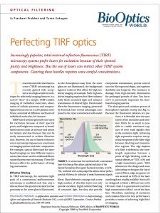

Use the left hand navigation to filter resources by Topic and Media Type.
-
EV Column Selectors
By IDEX Health & Science -
Changing Control Logic of LabPro Instruments and Cabinet Column Selectors
By IDEX Health & Science -
Tunable Bandpass Filters
By IDEX Health & ScienceMany applications benefit from tunable optical filters with the spectral and two-dimensional imaging performance characteristics of thin-film filters and the center wavelength tuning flexibility of a diffraction grating. Learn More

-
Thin-Film Filters for Raman Spectroscopy
By IDEX Health & ScienceRecent advances in thin-film filter technology have enabled dramatic improvements in the performance of filters for laser-based analytical instrumentation. Learn More
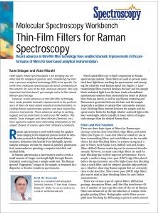
-
Thin-Film Filters Come of Age
By IDEX Health & ScienceMultilayer optical thin-film filters play a critical role in applications ranging from biomedical and analytical instrumentation to advanced laser systems. Learn why thin-film coating technology has been a technological breakthrough in biotechnology and other fields. Learn More
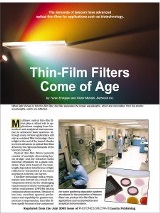
-
The Story of Semrock
By IDEX Health & ScienceDiscover how the Semrock optical filters business was started back in 2000. Learn More
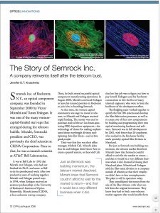
-
The Emergence of Multimodal NLO
By IDEX Health & ScienceMultimodal nonlinear optical (NLO) imaging is a microscopy approach used in a variety of biomedical applications. It harnesses and integrates the unique capabilities of nonlinear processes such as multiphoton fluorescence, second- and third-harmonic generation (SHG and THG), and coherent Raman scattering (CRS) and combines them seamlessly into a single, unified microscopy platform. Learn More

-
Steep Edges for the Finest Fingerprints
By IDEX Health & ScienceOptical edge filters are critical to the performance of Raman detection systems. This article describes two families of long‐wave‐pass (LWP) edge filters that Semrock has developed specifically for Stokes‐shift backscattered Raman signal detection systems. These filters are used in commercial Raman systems for polymer science, thin film analysis, geoscience, and the pharmaceutical industry Learn More
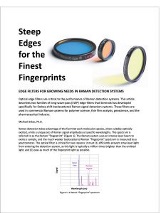
-
Photovoltaics: Raman Spec Monitors Thin-Film Si PV Cell Manufacture
By IDEX Health & ScienceThin-film silicon (Si) photovoltaics are a combination of amorphous and microcrystalline Si; monitoring the proportions via Raman spectroscopy and high-performance optical filters allows the cells to be optimized during manufacture. Learn More

-
Perfecting TIRF Optics
By IDEX Health & ScienceIncreasingly popular, total-internal-reflection-fluorescence (TIRF) microscopy systems prefer lasers for excitation because of their spectral purity and brightness. But the use of lasers can restrict other TIRF system components. Clearing these hurdles requires some careful considerations. Learn More
